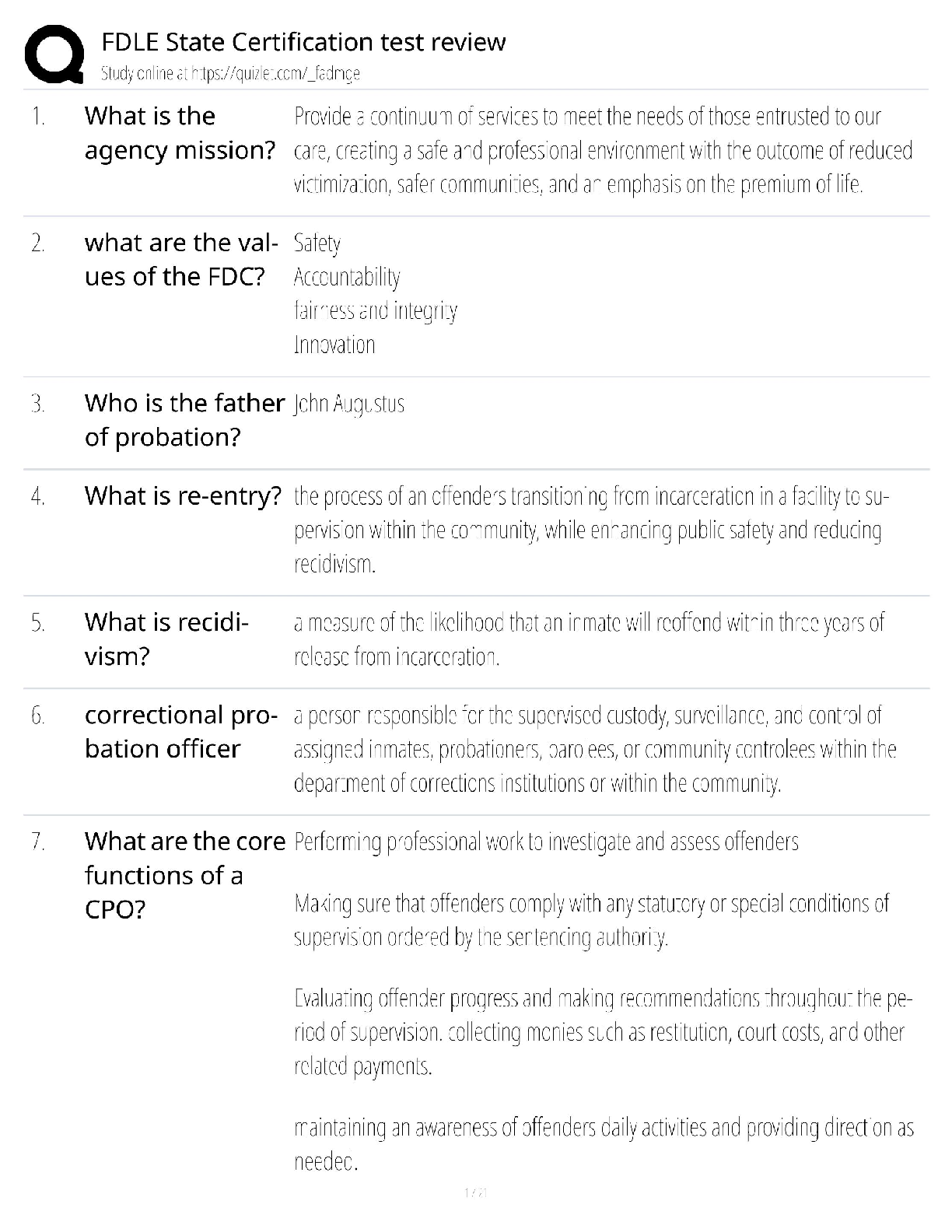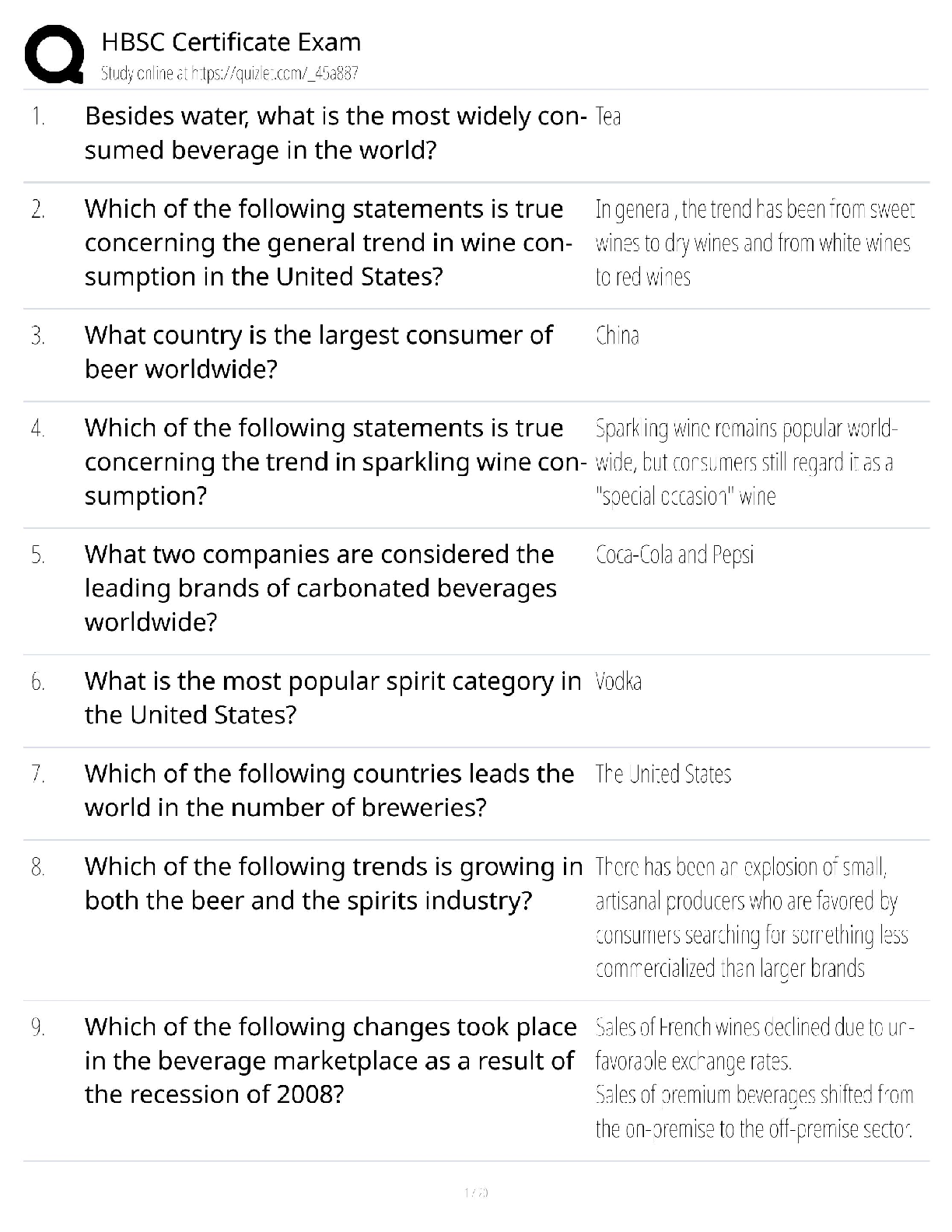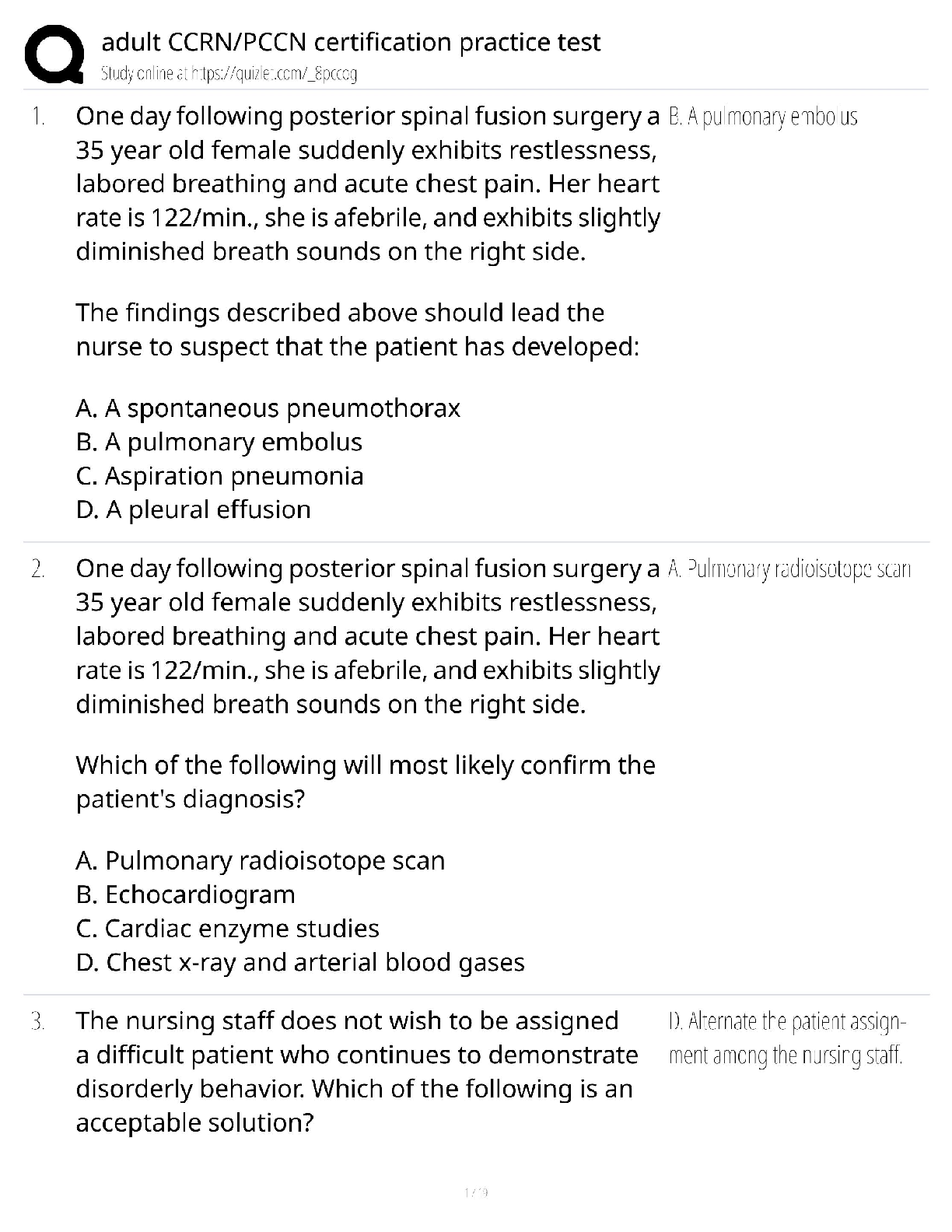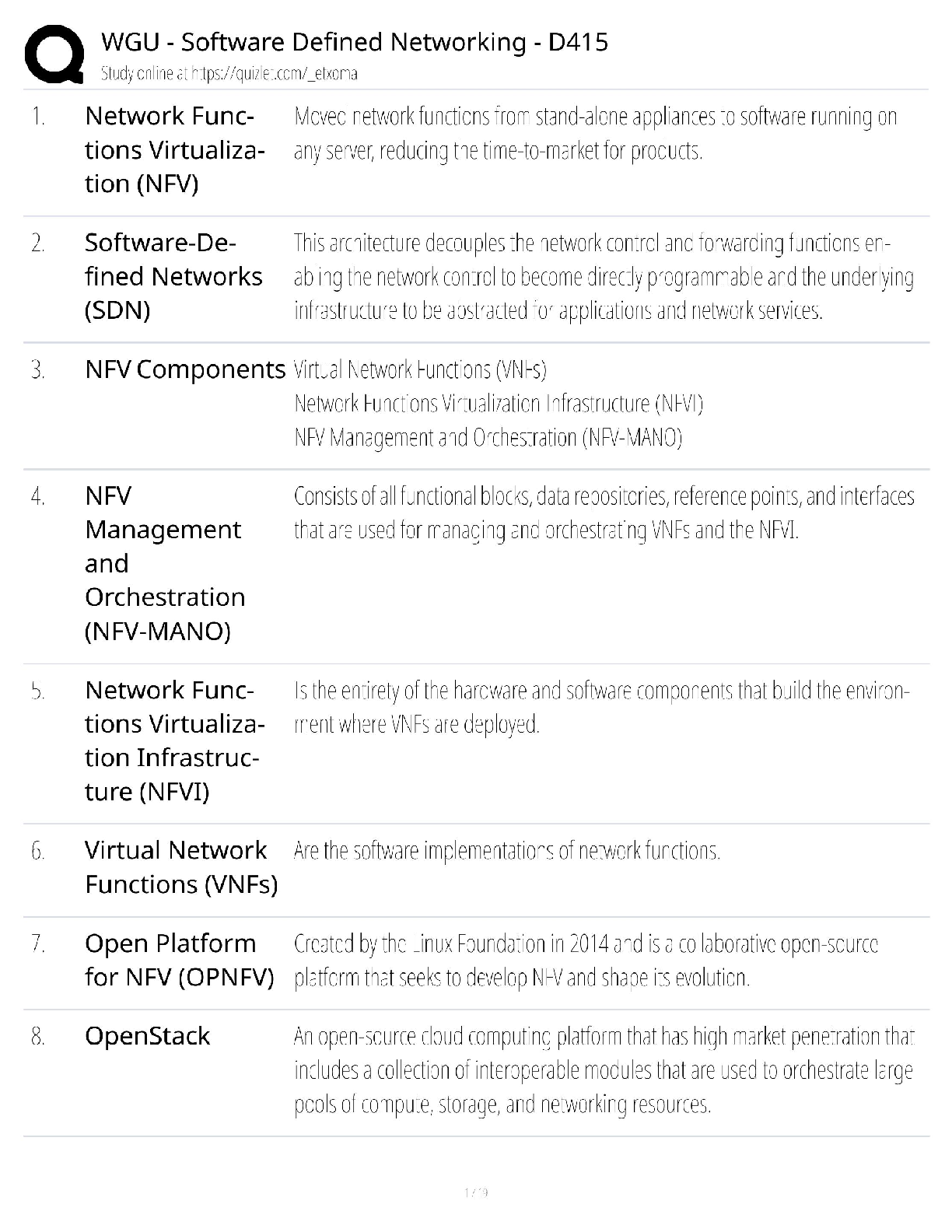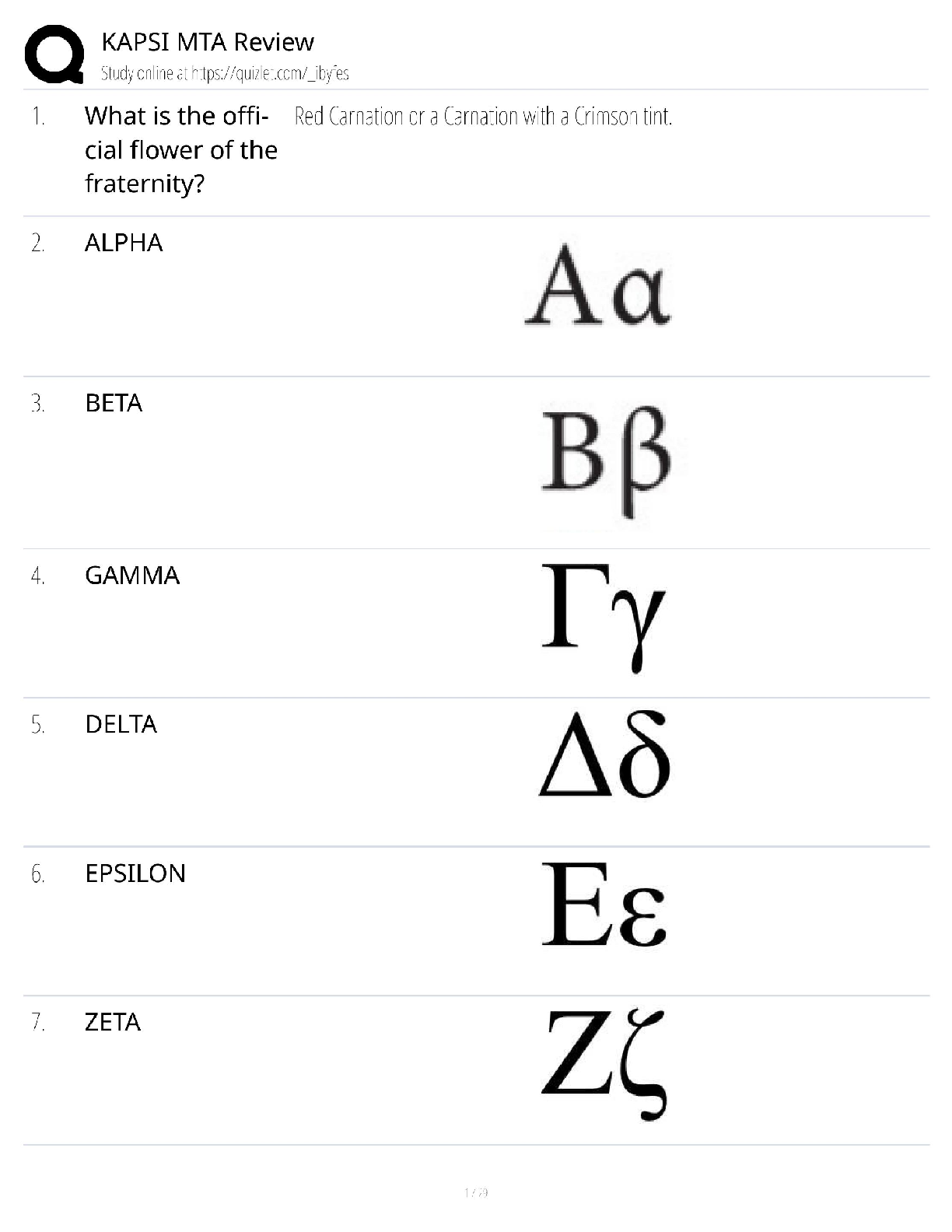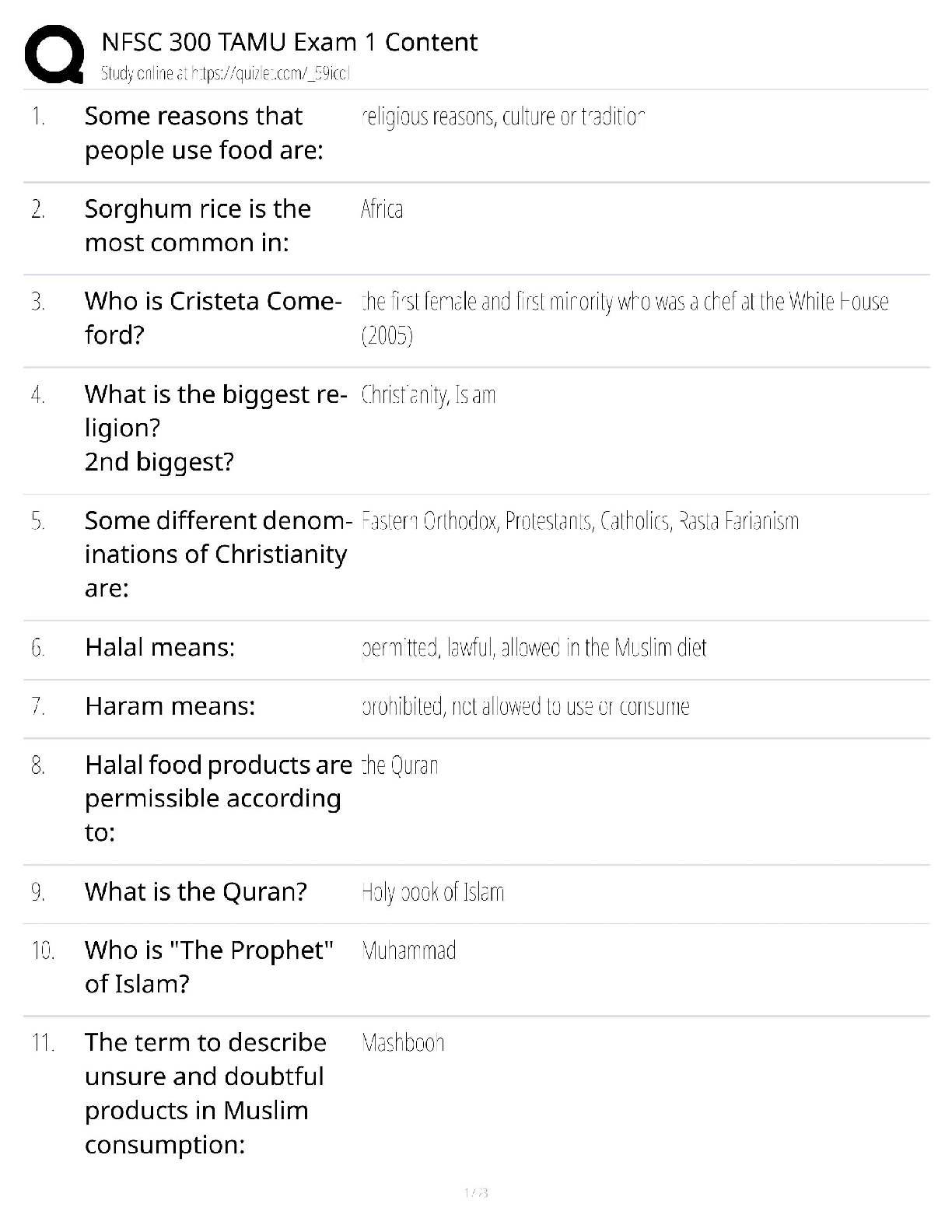*NURSING > QUESTIONS & ANSWERS > NR 283 Quiz 4: Path physiology exam test questions and answers solved complete solution docs (All)
NR 283 Quiz 4: Path physiology exam test questions and answers solved complete solution docs
Document Content and Description Below
NR 283 Quiz 4: Path physiology exam test questions and answers solved complete solution docs Name: ___________________________ All questions are worth 1.5 pts unless otherwise indicated. 1. Paraly ... sis of the lower part of the body is called: a. hemiplegia b. paraplegia. c. quadriplegia. d. Isoplegia 2. Which of the following is likely to develop when a leg is immobilized in a cast? a. Muscle atrophy b. Contracture c. Muscle hypertrophy d. Increased osteoblastic activity 3. What do prolonged periods of immobility frequently lead to? 1. Orthostatic hypotension 2. Increased blood pressure and increased heart rate 3. Increased risk of both thrombi and emboli 4. Rapid, deep respirations a. 1, 2 b. 1, 3 c. 2, 4 d. 3, 4 4. Which of the following events would most likely cause a person to faint and experience difficulty breathing? a. Exposure to gamma rays b. Eating fish containing mercury c. An insect sting d. Inhalation of asbestos particles 5. Which statement applies to food poisoning? 1. It results from consuming contaminated food and water. 2. It often causes gastroenteritis, including vomiting and diarrhea. 3. Outbreaks occur frequently in institutions. 4. It is often caused by Escherichia coli, normally found in the stomach. a. 1, 3 b. 2, 4 c. 1, 2, 4 d. 1, 2, 3 e. 1, 2, 3, 4 6. What is the most common cause of type 1 diabetes mellitus? a. Increased glucose production in the liver b. Destruction of pancreatic cells by an autoimmune reaction c. Increased resistance of body cells to insulin action d. Chronic obesity 7. Differences between type 1 and type 2 diabetes include which of the following? a. Type 1 diabetes weight gain is common, and type 2 weight loss often occurs. b. Type 1 diabetes leads to fewer complications than does type 2 diabetes. c. Type 1 diabetes may be controlled by adjusting dietary intake and exercise, but type 2 diabetes requires insulin replacement. d. Type 1 diabetes occurs more frequently in children and adolescents, and type 2 diabetes occurs more often in adults. 8. What is the cause of diabetic ketoacidosis? a. Increased catabolism of fats and proteins b. Excess insulin in the body c. Loss of glucose in the urine d. Failure of the kidney to excrete sufficient acids 9. Which of the following cells resorb (destroy) bone? a. Osteocytes b. Osteoblasts c. Osteoclasts d. Stem cells from the bone marrow 10. Identify the sequence of bone healing in fractures. a. 2, 1, 3, 4, 5 1. Procallus formation b. 3, 1, 2, 4, 5 2. Callus formation c. 3, 2, 1, 4, 5 3. Hematoma formation d. 1, 2, 3, 4, 5 4. Callus replacement with bone e. 1, 2, 3, 5, 4 5. Remodeling 11. In a greenstick fracture: a. More than two bone fragments are present. b. The fracture crosses the entire width or thickness of the bone c. Separation and tearing of the ligaments exist. d. Post-traumatic infection always occurs. e. The surface opposite the break is intact, but bends. 12. The most common type of joint, which are freely movable, are called: a. Synarthroses b. Amphiarthroses c. Anarthroses d. Diarthroses 13. Osteomalacia results from: a. excessive bone resorption by osteoclasts. b. a deficit of vitamin D and phosphates. c. replacement of bone by fibrous tissue. d. Hyperparathyroidism 14. Which of the following statements does apply to osteoporosis? (Select all that apply) a. Bone resorption is greater than bone formation. b. It causes compression fractures of the vertebrae. c. Osteoporosis is the direct result of an active lifestyle. d. It often leads to kyphosis and loss of height. 15. A strain is a tear in a ligament: (1 pt) a. True b. False 16. Starting with the right atrium and ending with the vena cava, list the chambers, vessels, and valves involved in the pulmonary and systemic circulations. (3 pts) Right atrium______________ ________________________ ________________________ ________________________ ________________________ ________________________ ________________________ ________________________ ________________________ ________________________ ________________________ ________________________ ________________________ ________________________ ________________________ ________________________ Vena cava and coronary sinus [Show More]
Last updated: 3 years ago
Preview 1 out of 4 pages

Buy this document to get the full access instantly
Instant Download Access after purchase
Buy NowInstant download
We Accept:

Reviews( 0 )
$7.50
Can't find what you want? Try our AI powered Search
Document information
Connected school, study & course
About the document
Uploaded On
Dec 15, 2020
Number of pages
4
Written in
All
Additional information
This document has been written for:
Uploaded
Dec 15, 2020
Downloads
0
Views
112

 answers.png)












